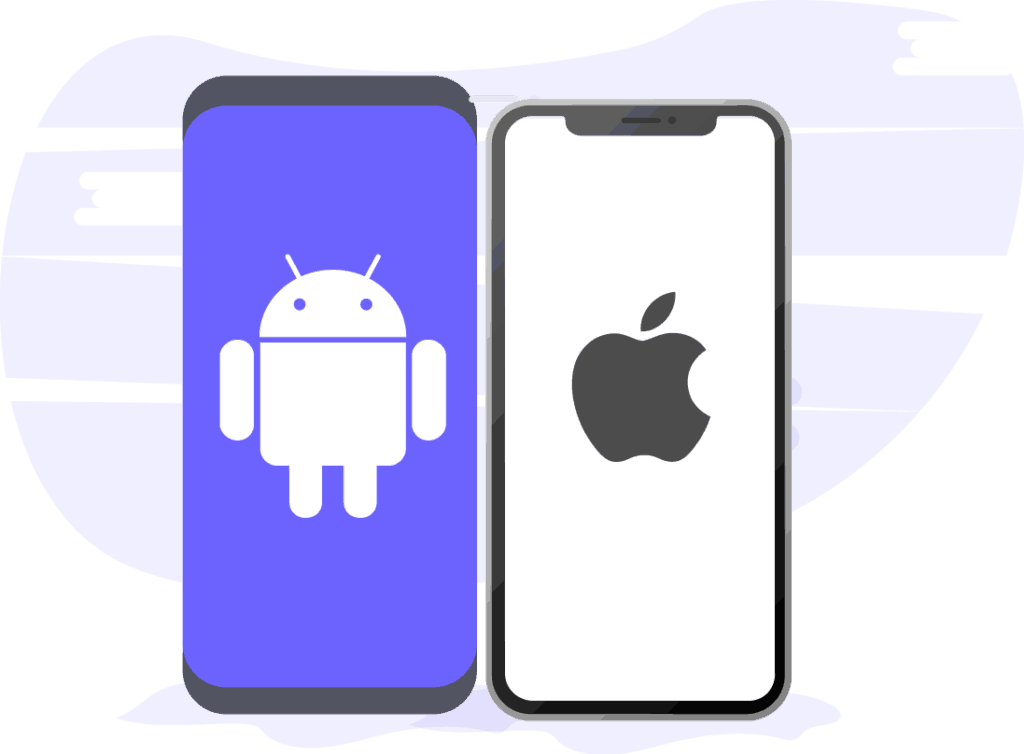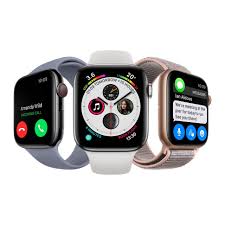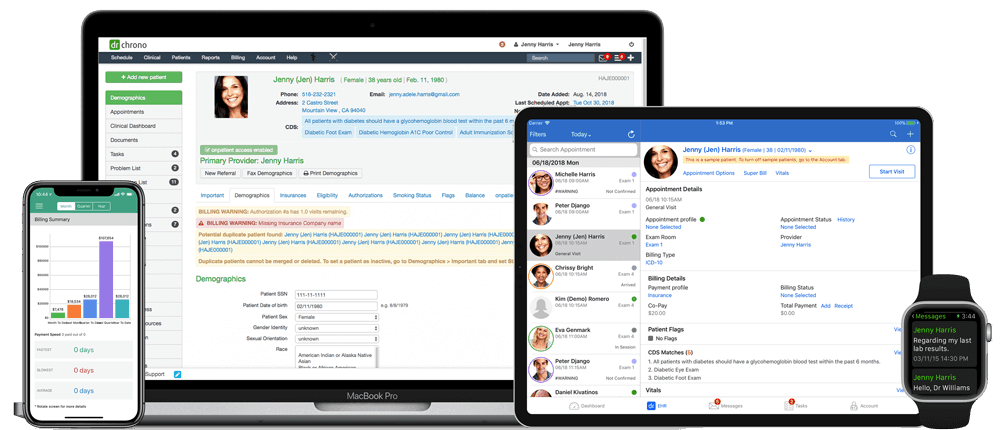Building your mHealth app is a very exciting and exacting process. But how can you add functions to your app in a cost-effective and time-efficient way?
Appointment scheduling, wearable device data tracking and logging, secure chat and video calls, and e-prescription are just some of the most important services your mHealth app can offer. However, writing code for each of these while complying with regulatory standards is not easy.
Custom coding these features is not impossible. In fact, it can be preferable and ideal in certain situations. But it comes at a cost. If your budget and time are limited, you are going to hit a wall here.
Development time and costs
As we mentioned in a previous blog, building a mHealth app is a lot different from building a regular app. You are dealing with sensitive data that needs to be protected and presented in a format that is acceptable in the medical world which can impact costs of app development.
Building a regular app with custom coded messaging and appointment scheduling can easily cost $100,000 to $500,000. Note that this is not a mHealth app and does not come with the same regulatory standards such as HIPAA, HITECH, HL7, and others.
Time is priceless
Apart from being very expensive, it can take a very long time for developers to finish writing your code and debug. There is a risk that by the time you finish building your app, it may be surpassed by another one built by your competition.
The market doesn’t wait for anyone. A good idea is not enough to keep people excited and loyal. People need to see and use your app to be convinced that your app is what they need. If you take too long to launch, there is a high risk of failure and expanded marketing costs to recapture the attention of your target audience.
Remember, clinicians and patients tend to be very loyal to whatever apps they are using. Their data is so integrated that migrating is a costly process on their end. Delay can cost both you and your potential clients. If your audience can’t absorb that cost, it will affect the adoption of your mHealth application. So keep this in mind.
Device Compatibility for mHealth applications

Debugging & Maintenance Updates
Long after your app is built and launched, you will need to continually monitor it for bugs and repair them. Custom coded apps are particularly more difficult to manage because of this. You need to have the human resource to be able to monitor app performance across all platforms and devices, and quickly fix any problems.
Depending on the complexity of your app, this can be an expensive and time-consuming process. But with an expanded budget, you can hire more developers to have more hands-on deck. But the question is, does this provide a positive ROI?
Security management
In June 2019, it was reported that the American Medical Collection Agency (AMCA) was hit by a massive data breach that resulted in the exposure of over 11million patient records. The leaked data included financial information, Social Security numbers, and medical information. A few days later, LabCorp also reported a breach following the AMCA incident. 7.7million patients’ demographic details, contact information, and banking data were exposed.
As of June 2019, AMCA has since filed for Chapter 11 bankruptcy protection.
Securing patient data cannot be over-emphasized. Is this a risk you want to take on in-house or is there a better way? There are services like Amazon’s AWS who provide HIPAA-as-a-Service. This is a no-brainer and surefire way to share the responsibility with a company that has the resources and determination to invest in making sure patient data is safe. They have a reputation to keep and have put their money on the line.
There is a better way
Fortunately, there is a better way. With plug and play solutions available on the market, you can have a fully functional mHealth app built for you with shorter turnaround time and better maintenance support.
API for patient scheduling, e-prescribing, EHR, chat, video, and others are now easily accessible. This allows you to get something off the shelf, integrate it into your app and launch quickly. Of course, this also provides a lot of room for you to innovate and upgrade your app in the future.
Let’s take a look at some of these plug-and-play solutions:
- Wearable Gear
- HIPAA Compliance-as-a-Service
- Secure end-to-end encrypted messaging
- Voice and Video Messaging
- Patient Portal, Scheduling, Billing, and More
- e-Prescribing
1. Wearable Gear

No doubt, this has opened the imaginations of many developers and entrepreneurs. In fact, today there are several off-the-shelf wearable tech health APIs that you can buy that track an expansive list of parameters previously only possible in a healthcare facility using multiple medical devices.
What can be tracked and measured?
There are a lot of parameters that can be measured from a mobile wearable device. Some of the most prominent are:
Sleeping patterns, body temperature, blood glucose, BMI, body fats, calories burnt & consumed, weight, heart rate, body height, menstrual flow, alertness, ovulation, sexual activities, genotypes, and body movement.
Get Health API is one of the more popular wearable health APIs. This is a unified REST-based API and it can fetch data from several health and fitness wearables, medical devices and monitors. Brands of devices covered include:
23andMe, Daily Mile, FatSecret, Fitbit, GoogleFit, Jawbone UP, Life Fitness, MapMyFitness, MapMyWalk, Microsoft, Misfit, Moves App, PredictBGL, Runkeeper, Sony Lifelog, Strava, VitaDock, Withings, Apple HealthKit, Android Sensor, and S Health.
ProgrammableWeb has an updated comprehensive list of available wearable APIs.
To learn more, see our article about building a wearable app.
2. HIPAA Compliance as a Service
Several cloud service providers whose infrastructure is specifically designed for Protected Health Information (PHII) are available. Here are the top 13 HIPAA-as-a-Service providers:
Amazon AWS
RackSpace
Microsoft Azure
Armor (previously Firehost)
Truevault
Liquid Web
VMRacks (HIPAA Vault)
Atlantic
Aptible
Datica
Connectria
OnRamp
Healthcare Blocks
Hosting PHI is not like hosting ordinary data and does require a higher level of care. You want to be sure that your hosting service provider is aware of this and has invested in the infrastructure to handle PHI.
3. Secure end-to-end encrypted messaging
Virgil Security offers an API which allows you to build fully encrypted, HIPAA compliant messaging services into your app with Google Firebase. They are the team behind Twilio’s end-to-end encrypted HIPAA compliant messaging.
4. Video and Voice Messaging
Integrate rich media communication in your mHealth app with Tokbox. This API powers live interactive video, voice and messaging. It’s highly customizable and is HIPAA compliant. So you can absolutely rely on Tokbox to build a variety of telemedicine services, e.g., teledentistry software to provide remote dental care.
5. Patient Portal, Scheduling, Billing and More
Drchrono is perhaps the most comprehensive plug-and-play solution available on the market today. It covers several large sectors of healthcare service management. They have modules for EMR, Medical Billing, Practice Management, Revenue Cycle Management, and a Patient Portal.

With Drchrono alone, you can have a fully functional, interactive mHealth app that gets the work done excellently. You can even customize the user experience to make it truly yours.
Popular apps using Drchrono include NexHealth, Beam Health, Physitrack, Health eFilings, and Genomind.
6. e-Prescribing
Do you need to take your pharmacy and prescription management digital? Truepill has a robust API that’s perfect for your e-Prescription or medical app. They not only provide the API but have the logistical backend covered as well. They have agreements with pharmacies nationwide so you can ship medications to patients anywhere in the USA. It’s a lot like a dropshipping solution – only better and well regulated.
Nurx, Hims, and Apostrophe are all powered by Truepill.
It’s not necessary to try to reinvent the wheel
As you can see, solutions exist for just about any feature you need for your mHealth app. This is especially beneficial when you need to build your app in the least possible amount of time without compromising on quality.
By utilizing these tools individually or combining them in a single app, you can build a truly unique and powerful mHealth app that both patients and practitioners will enjoy and depend on. The obvious advantage is that the owners of these APIs have both the financial and human resource capital to support and maintain them.
You can benefit from the millions of man-hours being invested in the background to keep your app running by engineers and developers who are highly specialized and experienced at their jobs.
Case in point: Medable
Our client, Medable, a privately-held company transforming healthcare by enabling patient-generated data to drive clinical research, healthcare delivery, and personalized and predictive medicine, wanted help from a development partner to customize their proprietary products for their customers: Fortune 500 healthcare companies and top medical research hospitals. Read about how we created API customization solutions for them here.
Times have changed
When websites were becoming popular and everyone wanted one, custom coding was the only way to have one. The best features and functions were only available to those who could afford added development costs.
Then came WordPress, plugins, and drag and drop builders. The rest is history.
The same is true with mHealth apps. Yes, custom coding is still a valid option, but is it worth the cost when you’re just getting started? You need a proof of concept first, and then you can innovate further.
Get back in control
Do you want to quickly build a mHealth app and still be able to offer the same robust features as a multi-million dollar health app? Get in touch with us here.
Related Articles: